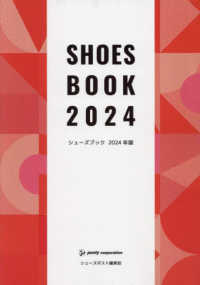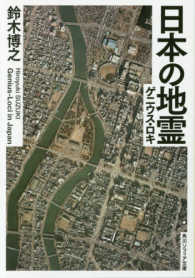Full Description
German and English: Academic Usage and Academic Translation focuses on academic and popular scientific/academic usage.
This book's brief is both theoretical and practical: on the theoretical side, it aims to provide a systematic, corpus-based account of current academic usage in English and in German as well as of the translation problems associated with various academic genres; on the practical side, it seeks to equip academic translators with the skills required to produce target-language text in accordance with disciplinary conventions. The main perspective taken is that of a translator working from German into English, but the converse direction is also regularly taken into account. Most of the examples used are based on errors that occurred in real-life translation jobs. Additional practice materials and sample translations are available as eResources here: www.routledge.com/9780367619022.
This book will be an important resource for professionals aspiring to translate academic texts, linguists interested in academic usage, translation scholars, and graduate and post-graduate students.
Contents
Contents
Preamble
Acknowledgements
1. Introduction: academic language today
2. Academic grammar
2.1 Number and countability: making abstractions concrete
2.2 Determiner use: using fewer articles
2.2.1 English zero article
2.2.2 German zero article
2.3 Phrasal complexity: packing information into word groups
2.3.1 Predicative nouns and their complementation
2.3.2 Non-predicative nouns
2.3.3 Compounds and multi-word expressions
2.3.4 Nominal compounds
2.3.5 Adjectival compounds
2.3.6 Complex postmodification in English and German
2.3.7 German premodification vs. English postmodification
2.4 Clausal complexity: making information flow
2.4.1 Basic word order rules and clause-initial framing
2.4.2 Countervailing tendencies in clause structure
2.4.3 Elaboration: Relative clauses and supplements
3. Academic vocabulary
3.1 General-language items
3.1.1 Nouns
3.1.2 Verbs
3.1.3 Adjectives
3.1.4 Small words: adverbs and particles
3.1.5 Informal words and expressions
3.2 Learned words (Bildungssprache)
3.3 General academic words and phraseology
3.3.1 Simplexes
3.3.2 Compounds
3.3.3 Particle constructions and spatial metaphor
3.4 Sub-technical vocabulary used in one or more disciplines
3.5 Subject-specific terminology
3.6 Subject-specific phraseology
4. Vocabulary and grammar: constructions
4.1 Lexicon and grammar vs. constructicon
4.1.1 Constructions and creativity
4.1.2 Nominal vs. verbal constructions
4.2 Constructions and word combining
4.3 Common constructions in academic text
5. Communicative purpose and linguistic form
6. Language use in the disciplines
6.1 Literary and cultural studies, art and art history: research proposal (abstract), talk
6.2 History: monograph
6.3 Sociology: journal article and monograph
6.4 Economics: textbook and research report
6.5 Philosophy: popularizing book
6.6 Geography: journal article
6.7 Musicology: journal article and abstract
Appendix I
Index







